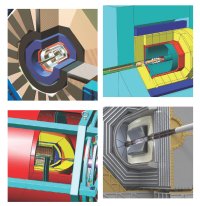Director's Corner
4 October 2007
 Barry Barish |
New detector leadership for the ILC
We are dedicating this special issue of ILC NewsLine to the appointment of the new ILC Research Director, Sakue Yamada of KEK Laboratory and the University of Tokyo. The International Linear Collider Steering Committee (ILCSC) has created this important position to provide guidance for the global detector R&D activities and coordination of the procedures for developing engineering designs for two complementary detectors. On behalf of the GDE, I enthusiastically welcome Sakue to our joint efforts. We anticipate working very closely together to move the ILC accelerator engineering design and detector efforts forward in concert.
During the next phase of the global efforts, we will need to advance the detector designs, while supporting the challenging bottom-up global detector R&D efforts. Balancing these sometimes conflicting demands will present its own form of "push-pull." Sakue's appointment fits the time-honoured traditions of HEP laboratories having a research director or equivalent to provide leadership to balance such push-pulls. On one hand, we must support a broad-based basic detector R&D effort; while on the other hand we need to develop engineer detector designs on a comparable time scale to the machine.
The ILCSC will also soon announce a call for Letters of Intent to carry out two complementary detector engineering designs. You might wonder why now, rather than after we have an approved project? The main reason is to prepare to propose funding for detectors when the accelerator is proposed. This way they can be built on the same time scale. To accomplish this goal, we must reliably determine the scope of the detectors and the technical and funding requirements, all before formal detector collaborations and approved detector designs have been established. Another reason for taking steps to appoint a research director and move forward on detector engineering designs at this time is to be able to effectively work together on such mutual issues as the interaction region, beam lines and shielding.
I should make clear that the research director will be independent of the GDE and will report directly to the ILCSC. Nevertheless, in addition to working closely together on mutual issues, we will provide Sakue with additional administrative support, and we expect to broaden our coverage of physics and detectors in our publications. We invite him to regularly use ILC NewsLine to communicate with the experimental community.
Welcome Sakue!
-- Barry Barish
